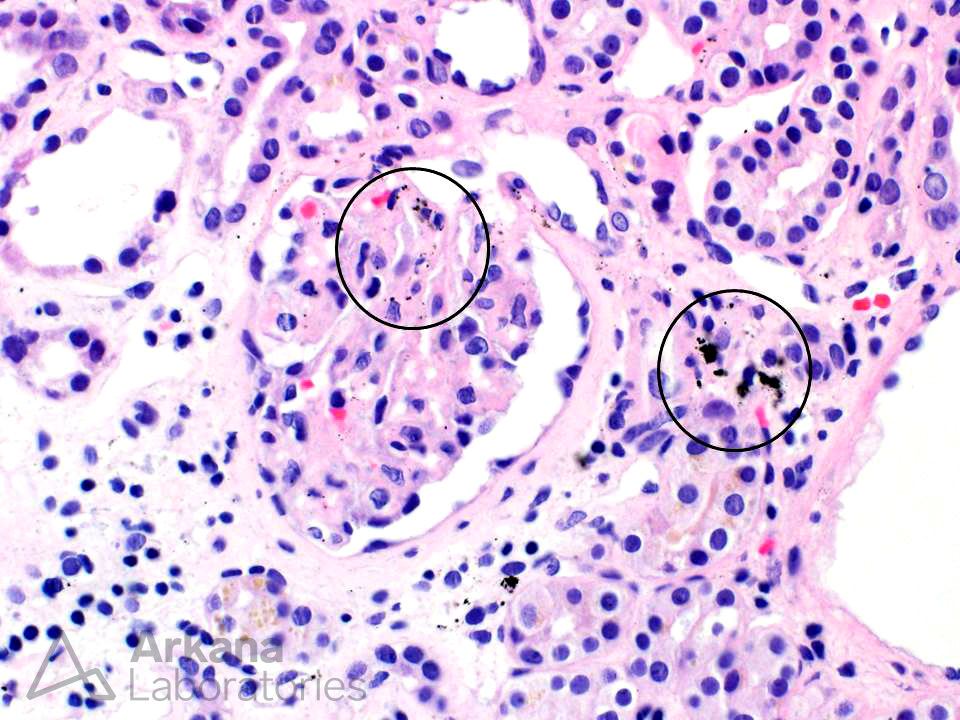An incidental finding in this kidney biopsy was the presence of granular black deposits along glomerular capillary walls and within the interstitium. Upon discussion with the nephrologist, the patient had been taking silver colloid as a long term alternative therapy, and he carried a diagnosis of argyria based on patchy gray discoloration of his skin. Most affected patients have had long term exposure to silver salts and/or silver colloid, and the deposits are thought to represent elemental silver or silver bound to various protein complexes. In more advanced cases, the silver deposits within glomeruli may even be visible grossly. It remains unclear whether the silver deposits are directly nephrotoxic.
Reference:
Mayr M, Kim MJ, Wanner D, Helmut H, Schroeder J, Mihatsch MJ. Argyria and decreased kidney function: are silver compounds toxic to the kidney? Am J Kidney Dis. 2009 May;53(5):890-4. PMID: 18976848.
Quick note: This post is to be used for informational purposes only and does not constitute medical or health advice. Each person should consult their own doctor with respect to matters referenced. Arkana Laboratories assumes no liability for actions taken in reliance upon the information contained herein.



